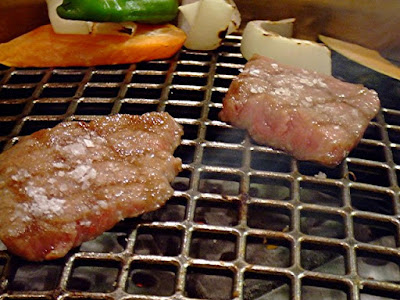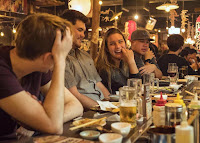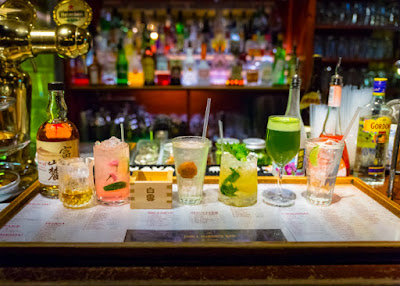It wouldn't be wrong to call Osaka the food capital of Japan, and the people take great pride in their local cuisine. There’s a popular saying ‘Osaka no kuidaore’ which literally means people in Osaka have the habit of eating themselves out of house and home. While there are several local specialties in Osaka worth experiencing, we will talk about the 5 food you have to try while in Osaka.
1. Takoyaki
This is the classic Osaka dish made with simple ingredients but scores high in terms of taste. It typically involves a mixture of eggs and flour stuffed with
sliced octopus, spring onions, ginger, and tempura crumbs. The dumplings are topped with a sweet sauce and mayonnaise, and sprinkled with
nori seaweed and dried bonito flakes.
The octopus may be substituted with shrimp, tomato, cheese or chocolate. The dish is prepared in a special pan that has hollow moulds and most homes in Osaka have this special tool for takoyaki parties. While most of the street side stalls in Osaka sell takoyaki, the
Dotonbori Konamon Museum is one of the best places to try this delicacy.
2. Kushikatsu
This is another must-try delicacy of Osaka and it mainly comprises of skewered kebabs of seafood, meat, or vegetables that are breaded and deep fried until they achieve a crispy golden finish. They are served with different styles of dipping sauces and flavored salt. Some of the typical ingredients you can expect to find on a kushikatsu menu are pork, beef, shrimp, eggs, sweet potato, pumpkin, onion, asparagus, lotus root, and
shiitake mushrooms.
Although you can find Kushikatsu in various restaurants around Osaka, it is believed to have originated in the
Kushikatsu Daruma restaurant. Today Kushikatsu Daruma has branches in Dotonbori and Shinsekai. Customers are allowed to choose a variety of kushikatsu skewers or order a la carte menu. The oldest branch still serves the delicacy and some people love flocking to the birthplace of Kushikatsu.
3. Okonomiyaki
Love pancakes? Then you must try this Japanese version of it made from flour, eggs, shredded cabbage, and grated yam. You can add more on top of these basic ingredients – squid, pork, shrimp, tomato, or cheese. Okonomiyaki is basically a Japanese term that means ‘grilled stuff you like’ and it is dressed with mayonnaise, brown sauce, and powdered
nori seaweed on the top.
While you can find okonomiyaki restaurants in any part of Osaka, the most popular place is
Mizuno in Dotonbori. You can watch the chef prepare pancakes in large iron griddles right in front of your eyes. You must try their signature dish ‘Mizuno-yaki’ which is filled with shrimp, scallops, pork, squid, oysters, and minced meat.
4. Yakiniku
This delicacy is pure and simple barbecued beef and it is prepared by grilling thinly slices of beef on a charcoal griddle. The pieces are then dipped in a savoury sauce before eating. It is believed that this style of barbeque was introduced to Japan by Korean restaurant owners. Even today the best restaurants are still the ones run by Koreans.
If you want to taste the best yakiniku in Osaka, then you must visit Tsuruhashi, also nicknamed Korea town. In this section of Osaka, you will find Koreans who have lived here for ages. This is where you will find the most authentic Korean restaurants selling Yakiniku and the most popular among them is
Ajiyoshi. You can order different cuts of grilled beef served with Ajiyoshi’s signature sauce.
5. Fugu
This is a type of raw fish delicacy is known as
sashimi in Japanese, and it is notorious for being risky if prepared by an inexperienced chef. Despite this, you don’t need to worry when savouring a bowl of fugu as all chefs must train for three years before they get the license to make this delicacy. The dish is not only delicious to taste but also visually appealing with thin slices of fish arranged in a beautiful pattern.
In
sashimi style, the raw fish has a light and subtle flavour but you may also savor it in
shabu shabu style in vegetable stew, tempura, or deep fried. At some places, you may get dried and baked fins of fugu, served with hot sake. In Osaka, the most popular area to find good fugu restaurants is Shinsekai, and the most sought after restaurant is
Zuboraya.
About the Author
Today's guest post is from sushi blogger, James.
James is a sushi enthusiast and owner of a sushi blog called
Easy Homemade Sushi. He has been to Japan several times and loves Japanese food and culture. He is also a passionate writer and likes to share his experiences and knowledge through his blog.
































